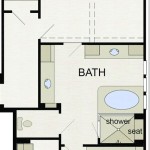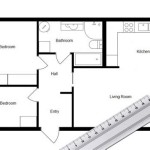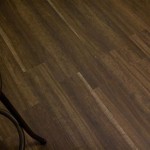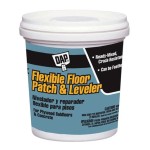Ceramic Tile Flooring Design Ideas
Ceramic tile flooring presents a versatile and durable option for a wide array of interior spaces. Its inherent properties of water resistance, ease of cleaning, and resistance to wear make it suitable for areas prone to moisture, high traffic, and general household use. Beyond its functional benefits, ceramic tile offers nearly limitless design possibilities, enabling homeowners and designers to achieve diverse aesthetic goals.
The selection of ceramic tile involves careful consideration of several factors, including tile size, shape, color, pattern, and texture. These elements combine to create a cohesive and visually appealing floor design that complements the overall architectural style and intended ambiance of the space. The following sections explore a range of design ideas, focusing on key elements and practical applications.
Tile Size and Layout Considerations
Tile size significantly impacts the perceived scale of a room. Larger tiles, such as 12x24 inches or even larger formats, can create a sense of spaciousness by minimizing grout lines. This is particularly beneficial in smaller rooms where a clean, uncluttered look is desired. Larger tiles also contribute to a more modern and contemporary aesthetic.
Conversely, smaller tiles, such as mosaics or traditional squares, can add visual interest and texture to a space. These can be used to create intricate patterns or to define specific areas within a room, such as a shower floor or a kitchen backsplash that extends onto the floor. Smaller tiles are often employed in more traditional or eclectic design schemes.
The layout pattern also plays a crucial role. A standard grid pattern is a classic and versatile choice suitable for most tile sizes and room styles. However, alternative patterns like herringbone, brick, or staggered layouts can add dynamism and visual appeal. A diagonal layout can also make a room appear larger or can be used to disguise uneven walls.
Grout lines, though often overlooked, are an integral part of the overall design. The color and width of the grout lines can significantly affect the appearance of the tiled surface. A contrasting grout color can accentuate the tile pattern, while a matching grout color can create a more seamless and unified look. Wider grout lines are typically used with rustic or textured tiles, while narrower grout lines are preferred with polished or rectified tiles. The choice of grout color should also consider maintenance; darker grout colors are less prone to staining.
Exploring Color and Pattern Variations
Color is a fundamental element of design, and ceramic tile offers a vast spectrum of hues to choose from. Neutral tones like white, beige, and gray provide a versatile backdrop that complements a wide range of design styles. These colors can create a sense of serenity and spaciousness, and they are often favored for modern and minimalist interiors.
Bold colors, such as blues, greens, reds, and yellows, can add personality and energy to a space. These colors are often used as accent tiles or in patterned designs to create a focal point. When using bold colors, it is important to consider the overall color scheme of the room and ensure that the tile color harmonizes with the other elements, such as wall paint, furniture, and accessories.
Patterned tiles offer another layer of design complexity. Geometric patterns, such as chevrons, hexagons, and floral motifs, can add visual interest and character to a space. These patterns can be created using individual tiles or by selecting pre-patterned tiles. Patterned tiles are often used in areas where a more decorative or statement-making floor is desired, such as entryways, bathrooms, or kitchens.
Wood-look tiles have become increasingly popular in recent years. These tiles mimic the appearance of natural wood flooring, offering the warmth and aesthetic appeal of wood with the durability and water resistance of ceramic tile. Wood-look tiles are available in a wide range of colors, wood grains, and plank sizes, allowing for various design possibilities. They are particularly well-suited for areas where real wood flooring is not practical, such as bathrooms, kitchens, and basements.
Stone-look tiles offer another alternative to natural materials. These tiles replicate the look of natural stone, such as marble, granite, and slate, providing a sophisticated and timeless aesthetic. Stone-look tiles are available in a wide range of colors, textures, and sizes, allowing for diverse design applications. They are often used in high-end residential and commercial spaces to create a luxurious and elegant atmosphere.
Texture and Finishing Touches
The texture of a ceramic tile can significantly impact its visual appeal and functionality. Smooth, polished tiles offer a sleek and elegant look, but they can be slippery when wet. These tiles are often used in formal living areas and bathrooms where a luxurious feel is desired.
Textured tiles, such as those with a matte or honed finish, provide better slip resistance, making them suitable for areas prone to moisture, such as showers, kitchens, and entryways. Textured tiles can also add visual interest and depth to a space, creating a more natural and organic feel.
The edge profile of a ceramic tile is another important consideration. Rectified tiles have precisely cut edges, allowing for minimal grout lines and a seamless appearance. These tiles are ideal for modern and contemporary designs where a clean and minimalist look is desired.
Non-rectified tiles have slightly rounded edges, resulting in wider grout lines. These tiles are often used in more traditional or rustic designs where a more textured and handcrafted look is desired. The choice between rectified and non-rectified tiles depends on the overall design aesthetic and the desired level of grout line visibility.
Underfloor heating can be incorporated with ceramic tile flooring to provide added comfort and warmth, particularly in colder climates. Ceramic tile is an excellent conductor of heat, making it an ideal choice for underfloor heating systems. This feature can transform a cold tile floor into a cozy and inviting space.
Transition strips are essential for creating a smooth and safe transition between different types of flooring. These strips cover the gap between the ceramic tile and the adjacent flooring material, preventing tripping hazards and protecting the edges of the tiles. Transition strips are available in a variety of materials, colors, and styles to match the surrounding flooring.
Proper installation is crucial for ensuring the longevity and performance of ceramic tile flooring. It is recommended to hire a professional tile installer to ensure that the tiles are properly laid, grouted, and sealed. A well-installed tile floor will provide years of durable and beautiful service.
In kitchens, ceramic tile flooring should be durable enough to withstand heavy foot traffic, water spills, and potential impacts from dropped items. Easy cleaning is also paramount. Patterns can be used strategically to hide dirt and minor imperfections, while lighter colors can brighten up the space. Consider using slip-resistant tiles, especially near the sink and cooking areas.
Bathrooms demand water resistance and slip resistance above all else. Smaller mosaic tiles are excellent for shower floors as they provide more grout lines, enhancing traction. Larger tiles on the main bathroom floor can make the space feel more expansive. Consider incorporating accent tiles to create a spa-like atmosphere.
Entryways and hallways are high-traffic areas that require durable and stain-resistant tiles. Darker colors and textured surfaces can help to conceal dirt and scratches. Consider using a durable grout that is resistant to staining and discoloration. Adding a decorative border or pattern can make a statement in these often-overlooked spaces.
Living rooms are versatile spaces where ceramic tile can create a stylish and durable flooring option. Choose tiles that complement the overall décor style, whether it's modern, traditional, or eclectic. Large format tiles can create a seamless and sophisticated look, while wood-look tiles can add warmth and character. Area rugs can be used to define seating areas and add comfort.
In basements prone to moisture, ceramic tile is an ideal flooring choice. Its water resistance and durability make it well-suited for these environments. Consider using a textured tile to prevent slips and falls. Lighter colors can brighten up a basement space that often lacks natural light. Ensure proper subfloor preparation to prevent cracking and movement.

Improve Any Room With These Easy Ceramic Tile Ideas Why

Tile Floor Design Ideas Modern Kitchen Flooring

Tile Design Ideas Inspiration Flooring Bathroom

7 Latest Ceramic Tile Flooring Ideas In 2024 Designcafe

Porcelain Tile Ideas For Kitchen Floor Hunker

10 Kitchen Floor Tile Ideas Tips Stone

5 Wood Look Tile Flooring Ideas Lowe S

Floor Tile Design Ideas For 2024 The Shop

Porcelain Tile Bathroom Pros Cons Installation

25 Modern Floor Tile Designs The Best Patterns For Every Room







